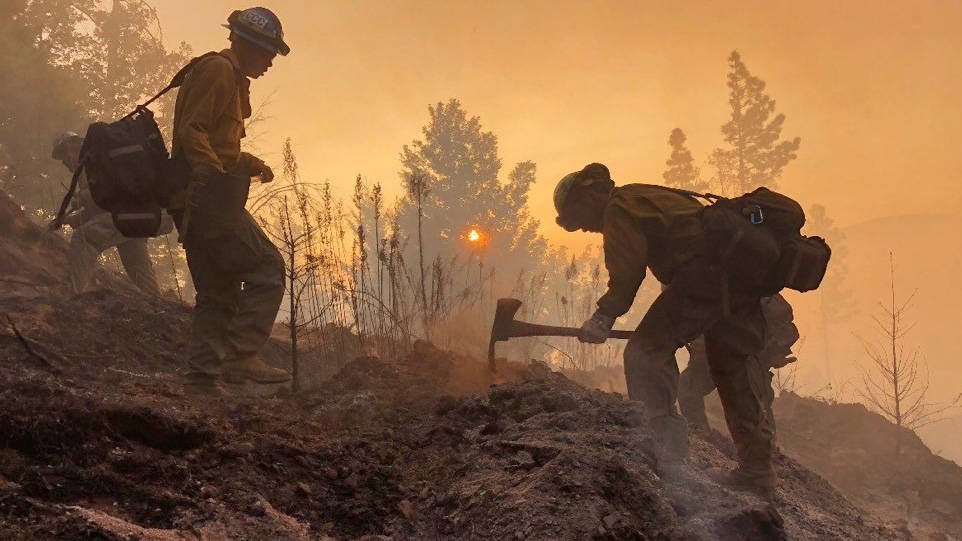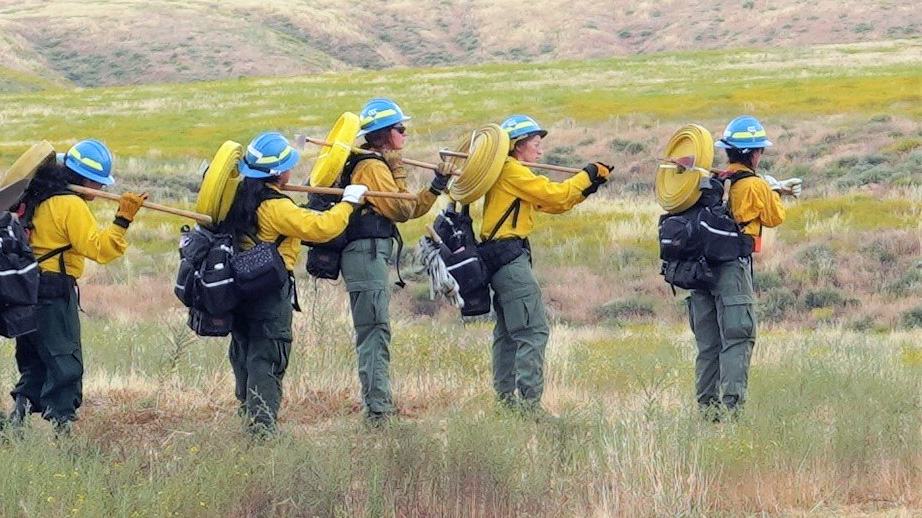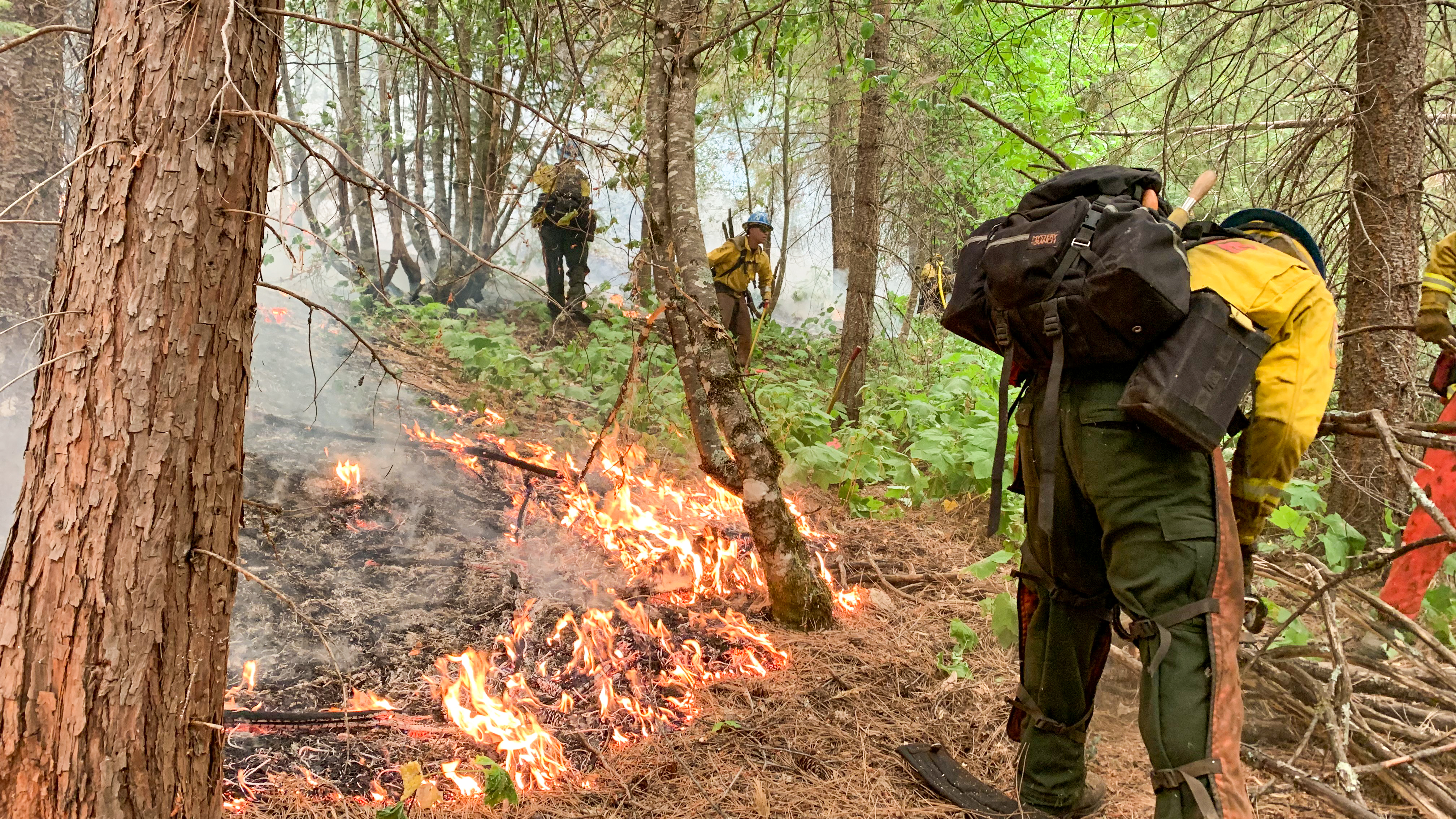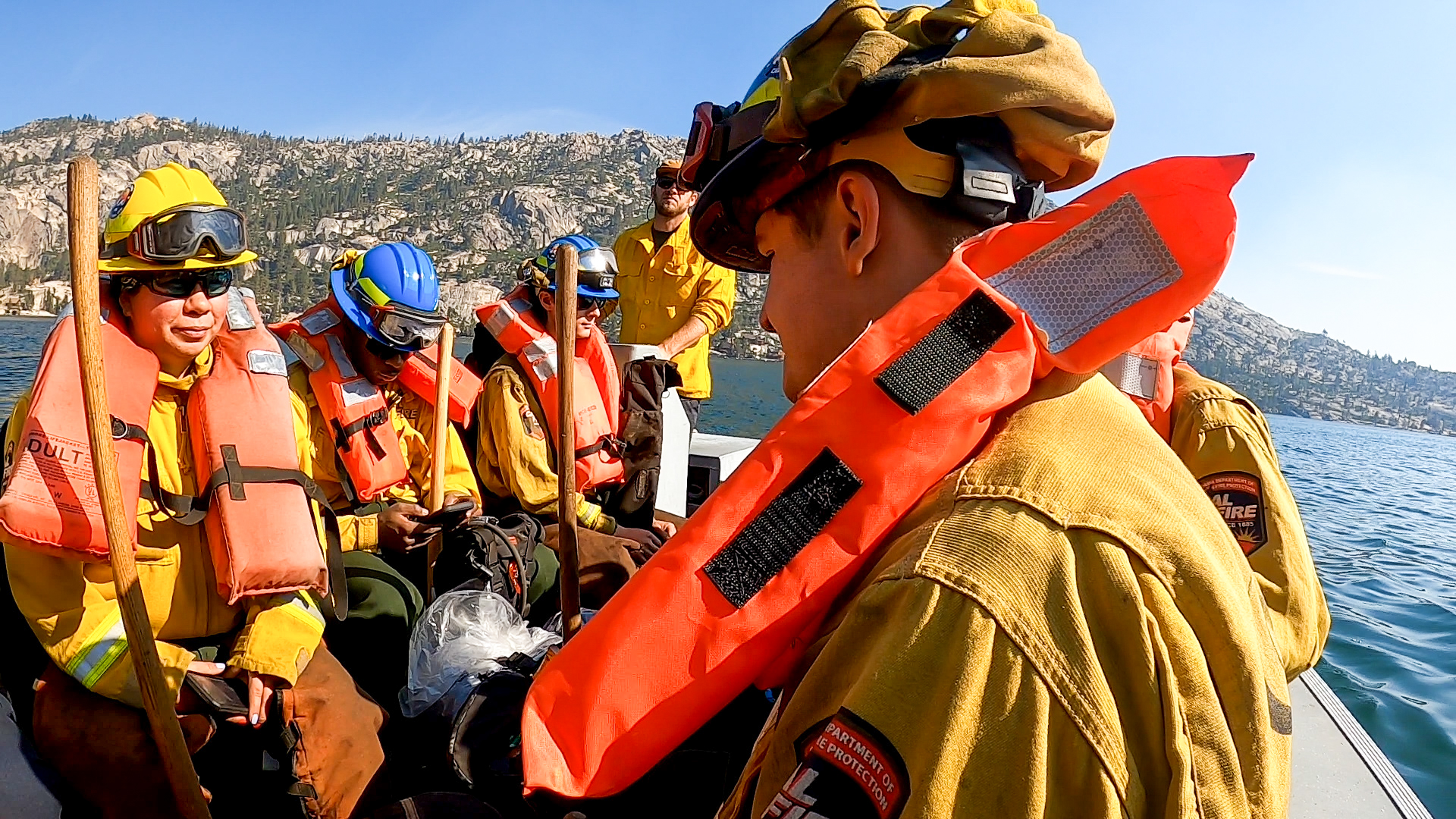Wildland Firefighting
The California Conservation Corps operates more than two dozen wildland firefighting hand crews. Fire hand crews operate at 15 CCC locations across California.
The CCC Wildland Firefighter Program offers Corpsmembers the opportunity to get paid while they train, earn certificates, and get hands-on experience on local and major wildland fires.
The CCC partners with CAL FIRE and the federal Bureau of Land Management (BLM) to operate wildland firefighting hand crews. Corpsmembers work with CAL FIRE captains and BLM crew bosses to build fire breaks with hand tools and chain saws to slow and stop the spread of wildfires.
One year in the CCC can lead to great career opportunities with CAL FIRE, BLM, U.S. Forest Service, county and city fire departments, and many other fire agencies. Corpsmembers not only gain hands-on experience, they gain the certifications needed to launch a fire career.
The CCC operates fire crews at the following centers:
TRAINING
• Provided by CCC partners and staff throughout the year
• Physical training is a necessity for wildland firefighters and Corpsmembers will spend days hiking with heavy equipment, as well as more traditional weight and cardio training to prepare for the rigors of the fire line
• Earn wildland firefighting certifications, including: IS-100, IS-200, IS-700, S-110, L-180, S-190, S-130, and more!
REQUIREMENTS
• Corpsmembers must meet strict physical fitness requirements
• Must pass written and physical tests to earn wildland fire certifications
• Must be willing to respond to emergencies and be on assignment for lengthy periods of time in remote locations
BENEFITS
• Get paid while you train in wildland firefighting
• Hands-on experience and training comes from professional state and federal firefighters
• All gear required for the fire line provide by the CCC
• Jumpstart your career in wildland firefighting, as Corpsmembers are regularly hired by CAL FIRE, U.S. Forest Service, Bureau of Land Management, and local and city fire agencies
• Help protect local communities and residents from devastating wildfires



See What It Takes Physically to Be on a CCC Wildland Fire Crew!


Watch: A Year in the CCC Can Launch Your Fire Career!

Corpsmembers looking to join year-round CAL FIRE crews may be required to show they can meet physical fitness requirements prior to enrollment. All Corpsmembers are trained by CCC partners and must meet those partners’ physical fitness requirements to work on a crew. Corpsmembers who do not pass these tests can transfer to another residential CCC center or will be transferred to a non-fire crew.
Physical Fitness Requirements:
• Corpsmembers must complete a 3-mile walk over level terrain in 45 minutes or less while wearing a 45-pound backpack. This is known as a pack test
• Our partners may require additional physical fitness standards be met
Physical Exam: Corpsmembers must have a CCC pre-enrollment physical exam once they arrive on center. The Corpsmembers must be cleared by the CCC’s hired medical professional to perform the duties of a wildland firefighter, including working long hours over multiple days in heat, dust, and smoke.
Training and Certifications: All CCC wildland firefighting Corpsmembers must pass the required firefighter written exams to work on a fire crew. Training varies slightly between CAL FIRE and BLM crews. However, Corpsmembers can expect to earn industry recognized certifications at all year-round centers. The following certifications may be available to earn (speak with a recruiter for specific center availability):
- A Fellers Chain Saw
- First Aid / CPR / AED
- CAL FIRE Firefighter Training
- Confined Space Rescue Awareness
- Emergency Medical Technician First Responder
- HAZMAT First Responder Operations
- ICS 100 – Intro to Incident Command System (FEMA)
- ICS 200 – ICS for Single Resources & Initial Action Incidents (FEMA)
- ICS 300 – Intermediate ICS for Expanding Incidents (FEMA)
- ICS 700 – National Incident Management System (FEMA)
- ICS 800 – National Response Framework (FEMA)
- L-180 – Human Factors in the Wildland Fire Service (NWCG)
- L-280 – Followership to Leadership (NWCG)
- S-110 – Basic Wildland Orientation (NWCG)
- S-130 – Firefighter Training (NWCG)
- S-131 – Firefighter Type 1 Training (NWCG)
- S-190 – Intro to Wildland Fire Behavior (NWCG)
- S-215 – Fire Operations in Wildland-Urban Interface (NWCG)
- S-219 – Firing Operations (NWCG)
- S-270 – Basic Air Operations (NWCG)
- S-290 – Intermediate Wildland Fire Behavior (NWCG)
- C-212 – CAL FIRE Level A Basic
- RT-130 – Annual Fireline Safety Refresher Training
So, are you ready for the challenge?
The first step to jumpstarting your wildland firefighting career is completing your online application.
Prepare yourself physically and mentally, review the documents below to get yourself ready for the opportunity of a lifetime.
Track Your Physical Fitness (PDF)
Read Position Description (PDF)
Fire Center Grooming Standards (PDF)
10 Standard Firefighting Orders (NWCG Link)
18 Watchout Situations (NWCG Link)


